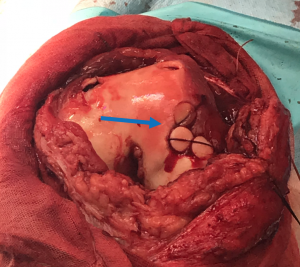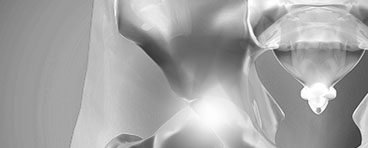Click on the links below to find out more
OSTEOCHONDRAL DEFECTs (OCD)
TREATMENT
Osteochondral defect treatment depends upon the cause and type of the lesion. Generally asymptomatic and small lesions can be treated with observation and activity modification (such as avoiding sports). Large and displaced OCDs do not heal by themselves and require surgery. Similarly, if non – surgical management fails to resolve the lesion then surgery may be indicated.
SURGICAL OPTIONS
Some osteochondral lesions are asymptomatic and may be incidentally found whilst imaging the knee for other reasons. These can be typically managed non-operatively with monitoring as many will heal spontaneously. Non-operative treatment may be indicated for some OCDs, and this may involve bracing, physiotherapy and medications.
Surgery for OCDs may involve either arthroscopic (keyhole) surgery or open surgery depending upon the type of lesion involved. Surgical Options include:
- Removing the lesion (excision -if the lesion is detached and too small to fix)
- Drilling (if the lesion is stable)
- Fixing with screws/bone anchors/dissolving pins (for unstable lesions)
- Bone grafting – for chronic non-healing lesions
- Cartilage grafting from other areas of the knee
- Cartilage grafting from donated cartilage – rarely indicated
- Alignment correcting surgery – to take the pressure off osteochondral lesion.
There are many pros and cons of each surgical option, and Dr Slattery will discuss these options in greater detail with you depending upon your symptoms, imaging, and examination findings.

OCD Drilling procedure which is done minimally invasively

Cartilage Grafts (blue arrows) – “OATS” Procedure to fill the OCD

Dr David Slattery
FRACS MBBS (Hons) LLB FAOrthA
Dr David Slattery is an orthopaedic surgeon based in Melbourne with over 10 years of experience, with a special focus on hip and knee joint preservation and replacement. With qualifications in both medicine and law, he brings a unique and comprehensive approach to patient care. His surgical techniques are minimally invasive and evidence-based, designed to reduce pain and enhance recovery.
Trained in leading institutions across Europe and the USA, Dr Slattery offers advanced treatments for a wide range of joint conditions. He is deeply committed to patient outcomes and takes pride in tailoring treatment plans to each individual. Whether you’re an athlete or seeking relief from chronic joint pain, his goal is to restore function and improve your quality of life.







